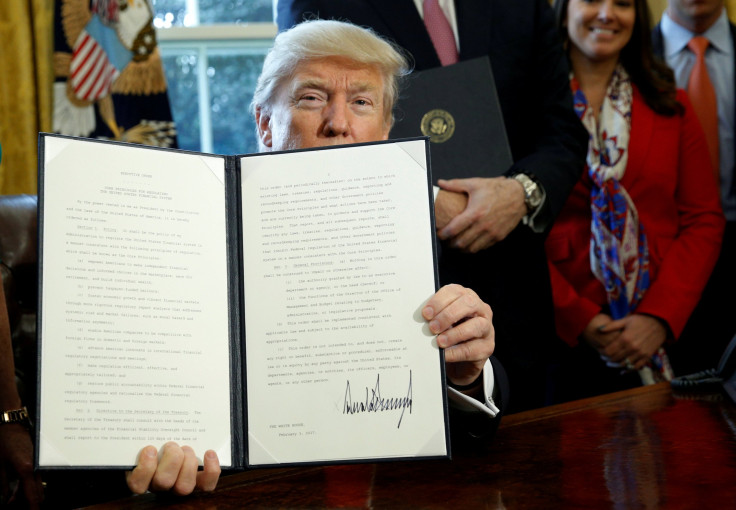Trump And The Environment: New EPA Reform Would Gut Obama Rule Protecting Water Quality

President Donald Trump’s next executive order, which he planned to issue Tuesday, would dismantle a 2015 Environmental Protection Agency rule placing 60 percent of the country’s streams and wetlands under the protection of the federal government.
Titled “Restoring the Rule of Law, Federalism and Economic Growth by Reviewing the ‘Waters of the United States’ Rule,” the order — which, according to the New York Times, has no standalone impact — would give EPA Administrator Scott Pruitt broad authority to “review the final rule… and publish for notice and comment a proposed rule rescinding or revising the rule.”
The executive order could soon be followed by a similar measure one week later initiating the withdrawal of another environmental legacy from former President Barack Obama’s tenure, the Clean Power Plan, which sought to limit greenhouse gas emissions from power plants, the Times reported.
Because of an October 2015 court ruling, the Waters of the United States measure, which clarified the scope of federal protection of waterways, hasn’t effectively been implemented. Its intent — giving the federal government power to combat nationwide water pollution — has long faced legal challenges.
The Supreme Court issued rulings in 2001 and 2006 challenging the extent of government protection of national waters under the EPA’s Clean Water Act (CWA). Five months after the Obama administration passed the rule in May 2015 to define a broad swath of U.S. waterways as under the CWA’s jurisdiction, the U.S. Court of Appeals for the Sixth Circuit issued a stay against the rule’s enforcement, effectively blocking it.
About a week before Trump’s inauguration, the Obama administration filed a brief defending Waters of the U.S. to the Supreme Court, which then agreed to hear arguments over the rule. With or without Trump’s Supreme Court justice appointee Neil Gorsuch, who leans far to the right, the rule would likely have been scrapped, as a 4-4 tie by the ideologically-split court would have upheld the circuit court’s stay.
© Copyright IBTimes 2024. All rights reserved.












